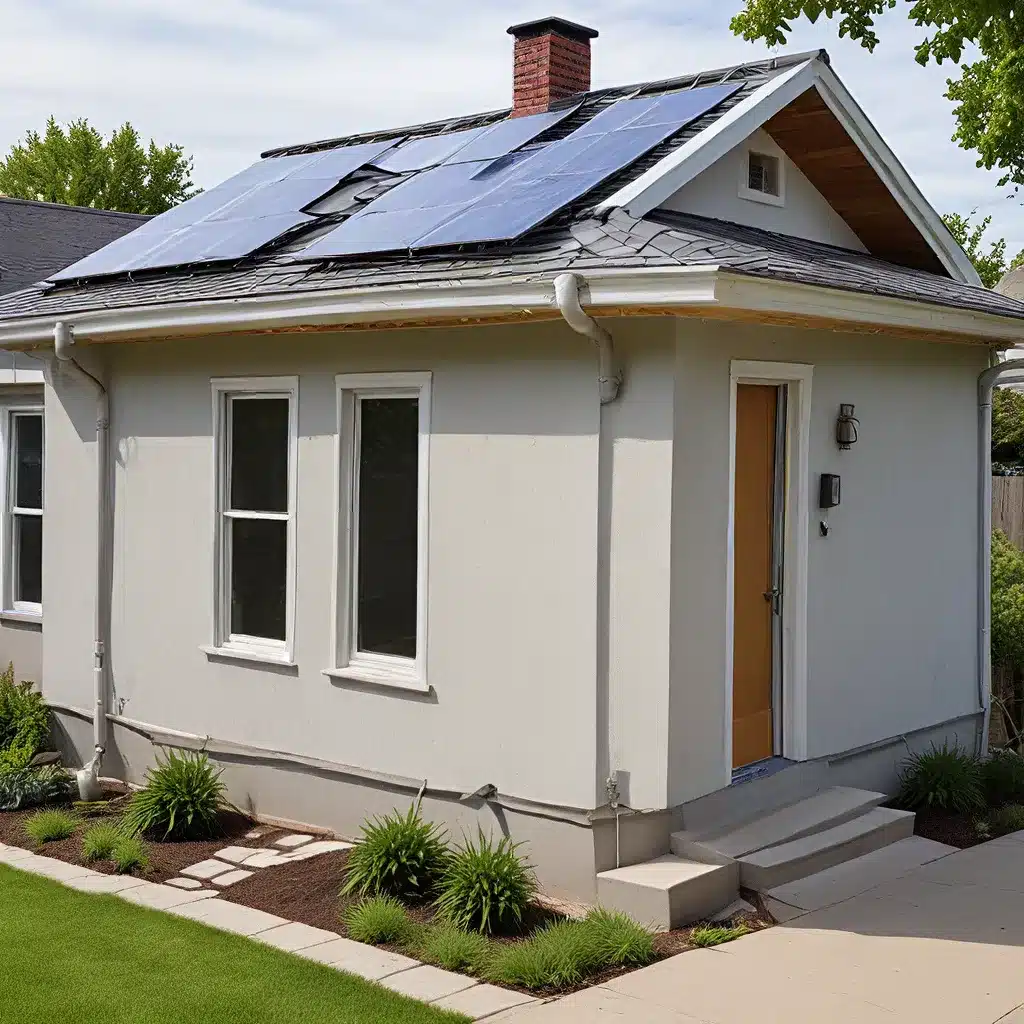
Unlocking the Potential of Our Aging Housing Stock
As someone who’s passionate about sustainability and the environment, I’ve always been fascinated by the potential of renewable energy solutions. But lately, I’ve become increasingly intrigued by an often overlooked aspect of the clean energy transition – the retrofit revolution happening in homes and buildings across the country.
You see, while the rapid growth of solar, wind, and other renewable power sources has been making headlines, there’s another quiet revolution taking place that could have just as big of an impact on our fight against climate change. And it all starts with the homes we live in.
From Wasteful to Wonderful: The Passive House Approach
If you’re not familiar with the concept of Passive House, let me fill you in. Passive House is a rigorous, voluntary standard for energy efficiency in buildings that results in ultra-low-energy structures that require little to no active heating or cooling.
As the Passive House Academy explains, these buildings are designed and constructed to take advantage of the climate, using state-of-the-art insulation, airtight building envelopes, high-performance windows and doors, and mechanical ventilation with heat recovery to create a comfortable and healthy indoor environment.
The beauty of the Passive House approach is that it can be applied to both new construction and retrofits of existing buildings. And that’s where the retrofit revolution comes into play.
Retrofitting Our Way to a Greener Future
You see, the vast majority of the buildings we’ll be using in 2050 already exist today. That means if we want to meet our climate goals, we can’t just focus on building shiny new energy-efficient structures – we also need to tackle the challenge of upgrading our aging, inefficient housing stock.
As the team at Dark Matter Labs points out, the UK alone has one of the oldest and leakiest housing stocks in Western Europe, and we need to retrofit 27 million homes by 2050 – that’s about 15 homes per minute for the next 27 years!
And the situation is similar in many other countries around the world. Older homes that were built with little regard for energy efficiency are major contributors to greenhouse gas emissions, not to mention the health and financial burdens they place on their occupants.
But here’s the thing – the solutions already exist. By applying the principles of Passive House design to existing homes through deep energy retrofits, we can transform these energy hogs into comfortable, healthy, and sustainable living spaces.
A Grassroots Retrofit Revolution
Now, you might be thinking, “Okay, that sounds great in theory, but how do we actually make it happen?” And that’s a valid question, because as we’ve seen with other large-scale sustainability efforts, the barriers to widespread adoption can be significant.
But the team at Dark Matter Labs has identified an inspiring approach that’s already taking root in communities across the UK – a community-powered retrofit revolution.
The idea is to empower local residents, community groups, and other stakeholders to take an active role in designing and delivering retrofit programs in their own neighborhoods. Instead of top-down, one-size-fits-all initiatives, this approach recognizes the unique needs and characteristics of each community and puts the power in the hands of the people who know it best.
By tapping into existing social infrastructure and fostering collaboration between homeowners, building professionals, and local organizations, these grassroots efforts are demonstrating the power of collective action to drive real change.
Lessons from the Renewable Energy Revolution
And you know what? This community-based approach to retrofit echoes a lot of the same themes that have fueled the remarkable growth of renewable energy over the past two decades.
As the team at Canary Media has pointed out, the key to the renewables revolution has been the positive feedback loop between falling costs and increasing scale of deployment. As more solar panels and wind turbines were installed, the technology became cheaper and more accessible, leading to even greater adoption.
The same dynamic can apply to home retrofits – as more communities band together to tackle this challenge, the costs will come down, the industry will grow, and the benefits will become increasingly tangible and widespread. But it’s going to take that initial push, that front-loading of support and investment, to get the ball rolling.
A Future-Proof Vision for Our Homes
Just imagine it – neighborhoods where every home has been transformed into a high-performance, climate-resilient, energy-producing powerhouse. Where damp, drafty, and overheated homes are a thing of the past, replaced by comfortable, healthy living spaces that save their occupants money on utility bills and improve their overall well-being.
And beyond the individual benefits, this community-powered retrofit revolution could also deliver broader economic and social dividends – from the creation of good local jobs in the retrofit industry to the strengthening of community ties and resilience.
It’s a future that’s well within our reach, but it’s going to take a concerted effort to get there. Are you ready to join the retrofit revolution? Because if we can harness the same kind of grassroots energy and innovation that’s fueled the renewable energy boom, I believe we can unlock the incredible potential of our existing homes and buildings to become part of the solution to the climate crisis.

